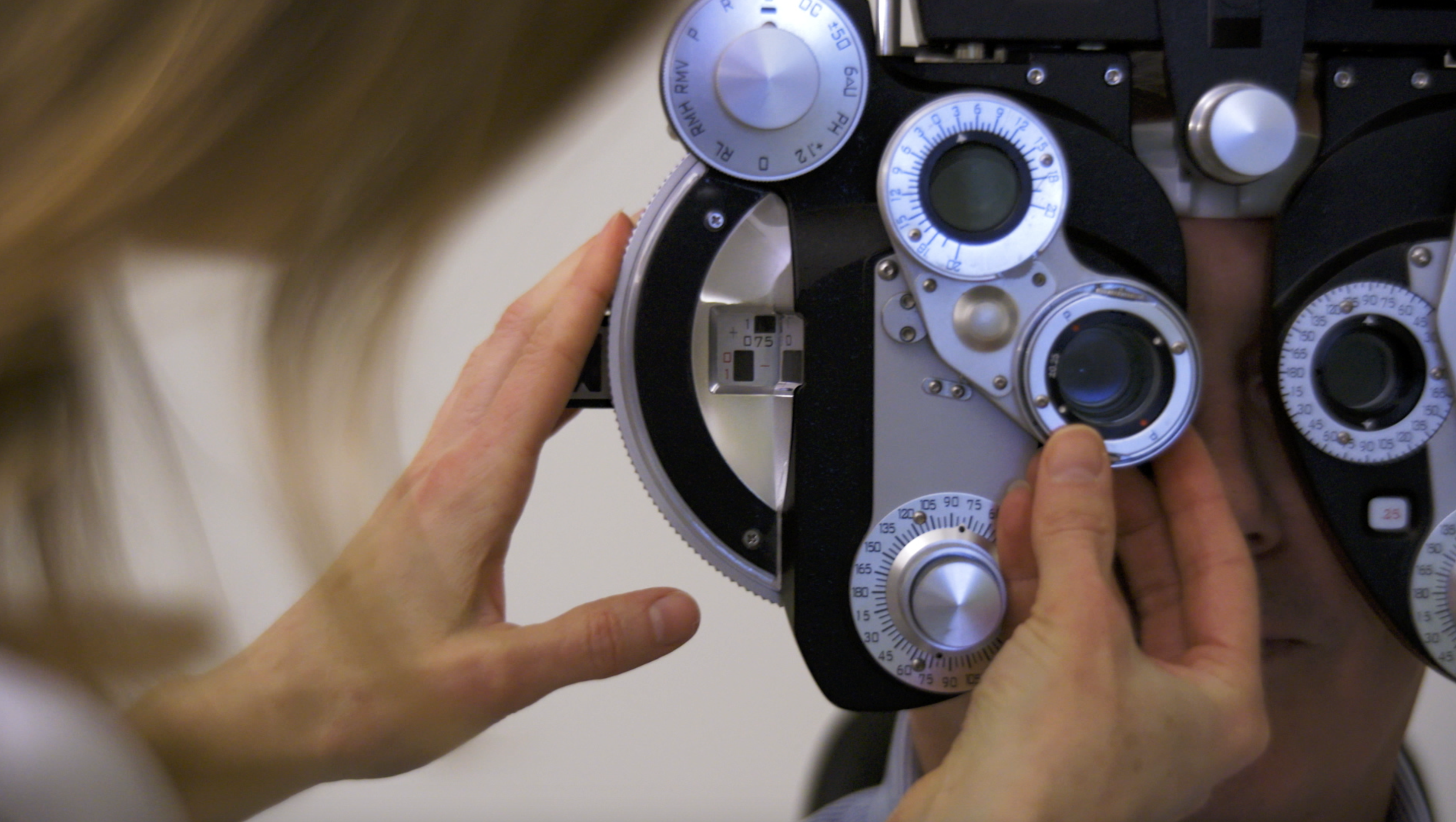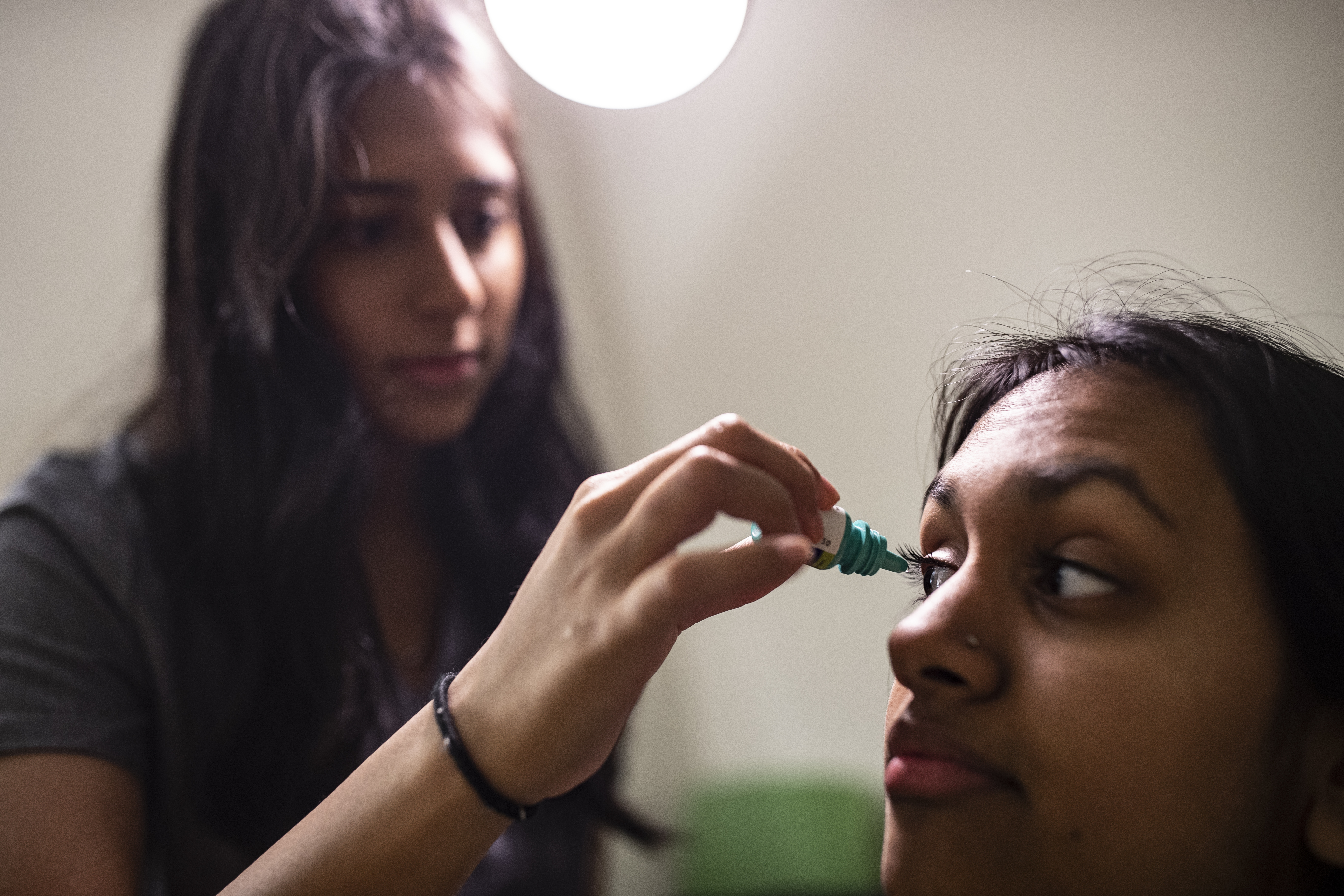What to Expect at Your First Eye Exam
"The eyes are like the windows to the soul" is a common saying we hear in the eye care world, and it holds a lot of truth. Despite what many patients think, eye exams are not just for glasses and contacts: a comprehensive eye exam can help detect many health issues such as diabetes, high blood pressure, high cholesterol, strokes, cancer, autoimmune diseases, visual processing disorders, and potentially blinding eye conditions.
The American Optometric Association (AOA) recommends everyone have an eye exam once between six to 12 months of age, once between three to five years of age, once before first grade, and then annually thereafter. Despite these recommendations, we still often see older children and even adults who have never had an eye exam with an eye care provider. If you find yourself in this category of patients, this article is here to help you understand the importance of eye care and what to expect at your first exam.
 Preparing for Your Eye Exam
Preparing for Your Eye Exam
The first step in your eye care journey is to make an appointment with a trusted eye care provider. Known for providing primary and specialty eye care, The Eye Institute’s two convenient locations have the latest in ophthalmic technology, right in your neighborhood.
Before your appointment, make sure you have an updated list of your medications, allergies, and any medical conditions you may have. Your eyes may be light sensitive and blurry for a few hours after the exam. If possible, come prepared with a pair of sunglasses and safe transportation home.
Preliminary Visual Tests and Measurements
At the beginning of your exam, the technician or the doctor will take many measurements assessing how well you can see, how well your pupils react to light, how well your eyes move, and the general resting position of your eyes. This part of the exam will likely feel very similar to those in a school screening or at your family doctor's office.
Refraction
After all the preliminary tests, your eye provider will perform a refraction. This is where you sit behind a small machine called a phoropter, and the doctor determines your eye glass prescription. You will likely hear the doctor ask, "Which one looks better, option one or two?" There is no right or wrong answer to this question — just tell the doctor what you see. After the refraction, the doctor may do some other visual testing with the new prescription.
Ocular Health Assessment
After refraction, the eye doctor will assess the health of the front part of your eyes with a large microscope called a slit lamp. Your doctor will look for signs of dry eye, pink eye, cataracts, seasonal allergies, and many other health conditions. During this part of the exam, you just get to relax while the doctor looks at your eyes with some lights.
 Eye Pressure Assessment
Eye Pressure Assessment
At this point, the doctor will check your eye pressures. Many eye diseases are asymptomatic, meaning patients don't know they have it unless they are checked regularly by an eye care provider. High eye pressure can be an indicator for eye diseases like glaucoma, so it's a routine part of the exam. Even though glaucoma is a treatable condition, once vision loss occurs, there is no way we can restore it.
There are many different methods for checking eye pressure, so you may experience the feeling of a small puff of air on your eyes, or you may just see a small blue light coming close to your eyes. Nevertheless, each method for determining eye pressure is safe and your eye care provider will ensure you feel comfortable throughout the procedure.
Dilation and Ocular Health Assessment
After checking eye pressures, your eye doctor will put dilating drops in your eyes so that they can fully assess the health of the back of your eyes. Dilating drops make your pupils very big so the doctor can have a good view of the retina, the structure at the back of the eye. The dilating drops take about 15 to 20 minutes to fully kick in, so be prepared to have a little downtime during the exam.
After about 20 minutes, the doctor will use a head-mounted light fixture and a big lens to view the back of your eyes. This is one of the most important parts of the eye exam because the retina in the back of your eye is where we usually find signs of disease. Your doctor will ask you to look in many different directions and use a bright light to assess the back of your eyes. They may also use the microscope for a second time to look at the health of your eyes after you are dilated as well.
Treatment and Follow Up Discussion
After your exam, your doctor will discuss any plans for treatment and follow-up appointments you may need. They will also give you a copy of your glasses prescription (if you need glasses) and direct you to where you can purchase them. This is the perfect time to ask any questions and make sure you understand what was discussed.
At this point, you have taken the very important first step to ensuring you have healthy eyes and vision: completing your first eye exam. Moving forward, make sure that you follow-up with your eye care provider yearly (or sooner based on their recommendation), and enjoy a long life of healthy eyes.
Call The Eye Institute at 215.276.6111 to schedule your appointment today.